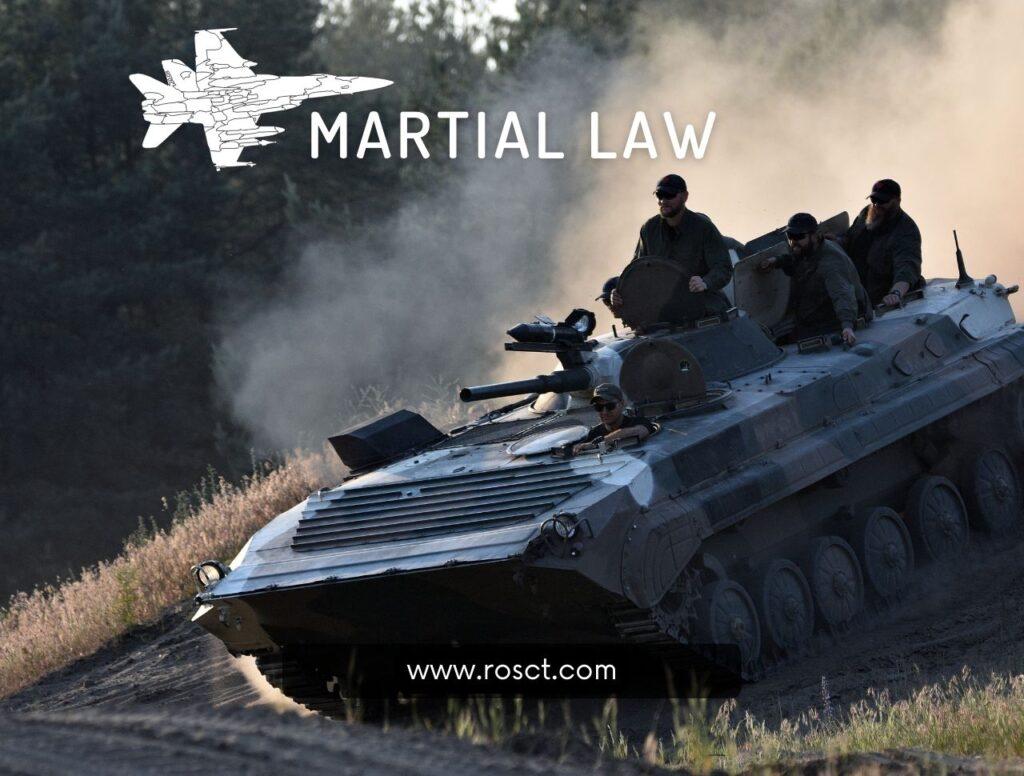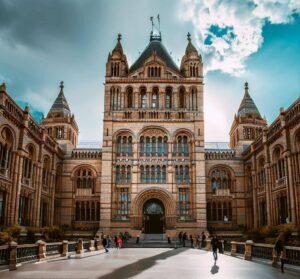Martial Law is when the military takes control of a place instead of the regular government. This can happen for different reasons, and there are different ways it can happen. This discussion will help you learn about the history of Martial Law, the different forms of military rule, and what it means for the people under it. It is a vital topic to understand because it affects the lives and rights of the citizens.
History of Martial Law
The term martial law comes from the Latin word martial, meaning “of Mars“, the Roman god of war. Martial law has been used since ancient times when military commanders had the authority to enforce laws and maintain order in their territories. It was also common in medieval Europe, where feudal lords and kings could impose military rule over their lands and subjects.
Martial law became more frequent and widespread in the modern era, especially during the 19th and 20th centuries, when many countries faced wars, rebellions, natural disasters, or political instability.
Factors and Conditions of Martial Law:
War: When a country is at war with another country or a foreign power, it may declare martial law to mobilize its military resources, protect its national security, and suppress any resistance or dissent.
For example, France declared martial law during the Franco-Prussian War (1870-1871), the First World War (1914-1918), and the Second World War (1939-1945).
Rebellion: When a country is facing an internal conflict or a civil war, it may declare martial law to quell the rebellion, restore order, and assert its authority.
For example, China declared martial law during the Taiping Rebellion (1850-1864), the Boxer Rebellion (1899-1901), and the Tiananmen Square protests (1989).
Natural disaster: A natural disaster, such as an earthquake, a flood, a hurricane, or a pandemic, may hit a country and make it declare it. It does this to provide relief, rescue, and recovery efforts, and to prevent looting, violence, or chaos.
For example, the Philippines declared martial law after Typhoon Haiyan (2013), which killed over 6,000 people and displaced over 4 million people.
Political instability: When a country is experiencing a political crisis or a regime change, such as a coup d’état, a revolution, or an assassination, it may declare martial law to maintain stability, security, and continuity.
For example, Pakistan declared martial law after the coup d’état of General Ayub Khan (1958), the assassination of Prime Minister Zulfikar Ali Bhutto (1979), and the state of emergency of General Pervez Musharraf (2007).
Types of Martial Law
Martial law can be classified into different types, based on different criteria, such as duration, extent, legality, and legitimacy. These criteria can affect the characteristics and outcomes of martial law, as well as the reactions and responses of the people and the international community.
Characteristics of Different Types of Martial Law:
Duration:
Martial law can last for a short or long time.
Short-term ends after a set time or event, such as a war, an election, or peace. Long-term goes on until a big change happens, such as a new government, a new constitution, or a revolution.
People usually prefer short-term law over long-term law, which can make them angry and rebellious.
For example, Thailand had a short-term law in 2014 for a year to stop violence. Turkey had long-term law in 1980 for three years until a new constitution was made.
Extent:
Martial law can affect some or all people and places. Partial law targets a specific area or group, such as a city, a region, or a minority. Full law covers the whole country or nation, affecting everyone and everything.
People usually accept partial law more than full law, which can make them feel more controlled and cut off.
For example, Poland had a partial law in 1981 for two years to stop the Solidarity movement. Argentina had full law in 1976 for seven years until democracy came back.
Legality:
Martial law can follow or break the law of the country.
Constitutional law follows the rules and steps of the Constitution, such as declaring an emergency, limiting some rights, or getting the approval of the lawmakers.
Unconstitutional law breaks the rules and steps of the Constitution, such as removing the government, ending the courts, or closing the parliament.
Constitutional law is usually more fair and responsible than unconstitutional law, which can cause more harm and dishonesty.
For example, Spain had constitutional law in 1936 for three years to fight the fascists and protect the republic. Chile had an unconstitutional law in 1973 for 16 years after a military coup that removed President Salvador Allende and ended democracy.
Legitimacy:
Martial law can be liked or disliked by the people and the world.
Popular law is for the good and safety of the people, such as keeping peace, security, and human rights. Unpopular law is for the benefit and power of the military, such as stopping freedom, democracy, and opposition.
Popular law is usually more peaceful and successful than unpopular law, which can cause more trouble and failure.
For example, Taiwan had a popular law in 1949 for 38 years to protect itself from communist China and become a democracy. Myanmar had an unpopular law in 1962 for 49 years after a military coup that ended parliamentary rule and elected a civilian government.
Consequences of Martial Law
Martial law can have different consequences, both positive and negative, for society, the state, and the individual. Depending on the type and context of the law, it can affect various aspects of life, such as human rights, democracy, security, economy, and culture.
Impacts and Implications:
Human rights:
Martial law can help or hurt human rights, depending on how it is done and watched. It can help human rights by giving safety, order, and justice in bad or urgent times. It can hurt human rights by taking away civil freedoms, controlling information, and doing crimes.
For example, Indonesia had it in 1965 to stop a communist coup that killed over 500,000 people in a big purge. Algeria had it in 1992 to stop an Islamist takeover and tortured and disappeared over 20,000 people in a civil war.
Democracy:
Martial law can help or harm democracy, depending on how it is explained and controlled. It can help democracy by keeping the constitutional order, making democratic changes, and bringing back civilian rule. It can harm democracy by removing the elected government, limiting political involvement, and extending military rule.
For example, South Korea had it in 1980 to stop a pro-democracy protest and killed over 200 people in the Gwangju massacre. Taiwan had it in 1949 to protect itself from communist China and ended it after 38 years when it became a democracy.
Security:
Martial law can help or hurt security, depending on how it is done and worked with. It can help security by using military resources, fighting threats, and keeping stability. It can hurt security by causing resistance, increasing violence, and creating instability.
For example, Thailand had it in 2014 to stop political protests and violence and bring peace and order after a year. A military coup in 1980 put Turkey under martial law and it faced several coup attempts and terrorist attacks until it made a new constitution.
Economy:
Martial law can help or hurt the economy, depending on how it is done and run. It can help the economy by providing infrastructure, investment, and development. It can hurt the economy by causing inflation, corruption, and stagnation.
For example, Chile had it in 1973 after a military coup that removed President Salvador Allende and made neoliberal reforms that improved its economic growth but increased its inequality. Argentina had it in 1976 after a military coup and faced hyperinflation, debt crisis, and recession until democracy came back.
Culture:
Martial law can either enrich or erode the culture, depending on how it is influenced and respected. On one hand, it can enrich the culture by promoting diversity, creativity, and identity. On the other hand, it can erode the culture by suppressing the expression, the innovation, and the heritage.
For example, Spain declared it in 1936 to defend the republic against the fascist rebellion and fostered a cultural renaissance that produced artists like Pablo Picasso, Salvador Dali, and Federico Garcia Lorca. A military coup in 1962 ended parliamentary rule and declared martial law in Myanmar. It isolated its culture from the world until it elected a civilian government.
The study of Martial Law has shown its complex history, varied types, and deep effects on societies. This extreme measure can either act as a defender of constitutional order, a helper of democratic change, and a way to bring back civilian rule, or it can harm democracy by ignoring elected leaders, limiting political involvement, and extending military rule. Understanding this complicated phenomenon is important for judging its role in changing the fate of nations and protecting democratic values.
Also, Read: Accident Injury Laws






